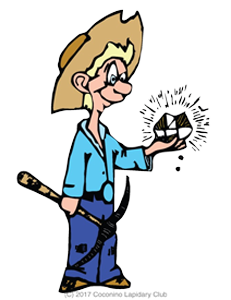The emerald is the chromium-containing variety of the mineral beryl [Ref 1]. Its’ beautiful, vibrant, deep green color has made it a great favorite among those that create beautiful jewelry and art works from it, gem & mineral collectors and those who wear it. Witness the Hooker Emerald, set with diamonds, in a brooch, seen in Figure 1 [Ref 2]. Mined in Colombia, polished in Europe, and sold in the 17th century to the ruling family of the Ottoman Empire, it was then auctioned in 1911 to Tiffany & Company and ultimately set in a brooch. It finally sold to Janet Annenberg Hooker who donated the brooch to the Smithsonian Institution.
A HISTORY OF EMERALDS THROUGH JEWELRY AND ART WORKS
In this blog I’ll describe the ancient history of the emerald as a gemstone, beginning
with their earliest-known written description in the Egyptian Papyrus Prisse during the twelfth dynasty of Egypt, from 1991-1802 BC [Ref 4], and arbitrarily ending with jewelry of the Georgian Era[Ref 5] in Europe and the end of the of the Ottoman Empire[Ref 6] in the East at the end of World War I.
Ancient History of Emeralds As A Gemstone
The name Emerald, evolved from esmeralde in 16th century Latin.
Emerald is an ancient gemstone. The first known written word about emeralds appeared in the Papyrus Prisse [Ref4] dated in the twelfth dynasty of Egypt (1991-1802 BC [Ref 7] and in which was written “But good words are more difficult to find than the emerald”. Emeralds were mined in Egypt, with the earliest-known mines operating from at least 300BC into the 1700s. Emeralds, highly prized by Cleopatra, probably came from these mines.
The Roman scholar Pliny, was first to suggest that emerald was a member of the larger family of the mineral beryl. Only in the 19th century did science recognize this relationship.
The emerald mines of ancient Egypt, known as the mines of Cleopatra, were located approximately 180 miles (300 KM) SSE of present-day Cairo, in a coastal region along the Red Sea, as shown in the map in Reference 8. Their history and locations are further discussed in Reference 9. The mines were the major source of emeralds for both Europe and the East, until emeralds of finer quality and greater abundance were found in Colombia in the 1520’s [Ref 8, Ref 9].
History of Emeralds in the Americas
Emeralds were prized by the Aztec, Olmec, Mayan, and Incan cultures of Middle and South America. They have been mined since early times, in areas of what is now Colombia, as evidenced by the Olmec carving “Emerald Man”, shown in Figure 2, which dates from approximately 500 BC to 250 AD [Ref 10].
Upon arriving in Mexico and Peru in the 16th Century, conquistadors discovered the natives of these lands possessed large, beautiful emeralds in the form of carved jewelry and artworks. Five gemstones brought by Cortez to Spain were cut into shapes of flowers, fishes and other natural objects. Emerald carving was an ancient art in the cultures of central and south America.
Emeralds were prized as an ornamental gemstone and held to be sacred. They were offered to their Gods and buried with their dead. However, the Conquistadors failed in their search for the sources of emeralds in Mexico and Peru. They desecrated sacred places in their searches, amassing a large treasure trove. Jose d’Costa reported that the ship on which he sailed from Peru to Spain in 1587 carried two cases, each with at least a hundredweight of emeralds.
The conquistadors failure in their search for the sources of the emeralds in Mexico and Peru was because the emeralds were mined only in the heartlands of the Chibcha Indians at Chivor, and the Muzo Indians at Muzo, in what is now Colombia. (Mines in these places still produce emeralds). Trade routes for emeralds extended to Mexico in the north and to Bolivia in the south. Ther’s a good chance that the “Emerald Man” was carved from a stone from one of these mines.
Ancient Emerald Jewelry of Europe and the East
Through trade routes, emeralds from the mines in Egypt were disseminated and reached artisans in ancient Europe [Ref 11], and in the Middle East, as evidenced by their creations of jewelry and art works. The craftsmanship and beauty of their works are exemplified in Figures 2-34.
For slide shows of the galleries please make two, one for ancient Europe and one for the Eastern Mughal and Ottoman jewelery and separate references accordingly. Thanks.
A Gallery of Emerald Jewelry of Ancient Europe
The jewelry in this gallery spans the time period between the 2nd Century BC to 1780 AD in the Georgian Era.



300-500 AD [Ref 14].


Circa 1600 – 1750 AD.

enamel crafted in Spain in the 1580s to the 1590s in the Renaissance Period [Ref 20].
The hull, mast, and sail are of emerald. The caravel is a small ship designed for maneuverability [Ref 21].
A Gallery of Jewelry of the Ancient Eastern Mughal and Ottoman Empires [Ref 26, Ref 27, Ref 28]










REFERENCES
Ref 1. https://www.mindat.org/min-1375.html
Ref 2. https://en.wikipedia.org/wiki/Hooker_Emerald_Brooch
Ref 3. http://www.multicolour.com/emerald/emerald-history.html
Ref 4. https://en.wikipedia.org/wiki/Prisse_Papyrus
Ref 5. https://en.wikipedia.org/wiki/Georgian_era
Ref 6. https://en.wikipedia.org/wiki/Ottoman_Empire
Ref 7. https://en.wikipedia.org/wiki/Twelfth_Dynasty_of_Egypt
Ref 8. https://www.gia.edu/doc/Emeralds-and-Green-Beryls-of-Upper-Egypt.pdf
Ref 9. https://www.gia.edu/gia-news-research/historical-reading-ancient-emerald-mines-egypt
Ref 11. https://www.gia.edu/gia-news-research/historical-reading-ancient-emerald-mines-egypt
Ref 12. https://www.mfa.org/collections/object/finger-ring-with-snakes-intertwined-around-an-emerald-260067
Ref 14. https://www.pinterest.com/pin/431430839279007892/?lp=true
Ref 15. https://www.pinterest.com/pin/455778424775081730/?lp=true
Ref 16. https://www.pinterest.co.uk/pin/342273640420805787/
Ref 17. http://gemma-antiqua.tumblr.com/post/163718543477/byzantine-gold-emerald-and-pearl-necklace-while
Ref 18. https://www.pinterest.com/pin/524387950334943861/
Ref19. https://www.pinterest.com/pin/524387950334943861/
Ref 20. https://www.internetstones.com/caravel-pendant.html
Ref 21. https://en.wikipedia.org/wiki/Caravel
Ref 23. https://thecozydrawingroom.com/2015/06/08/get-your-bling-on-jewelry-of-the-georgian-era/
Ref 25. http://www.delphiantiques.com/georgian-period-
Ref 26. https://en.wikipedia.org/wiki/Mughal_Empire
Ref 27. https://en.wikipedia.org/wiki/Ottoman_Empire
Ref 29. https://www.pinterest.com/pin/209417451399698310/
Ref 30. https://www.pinterest.com/pin/435019645247598553/?lp=true
Ref 34. https://bellatory.com/fashion-accessories/Mughal-Jewelry-Royal-and-antique-jewelry-of-North-India
Ref 35. https://www.pinterest.com/pin/350928995940529874/
Ref 36. https://www.pinterest.com/pin/575616396106094484/
Ref 37. http://www.turkishculture.org/applied-arts/jewelry/the-art-of-149.htm
Ref 38. https://www.pinterest.com/pin/462322717991663532/
Ref 39. https://www.pinterest.com/pin/462322717991662951/
Ref 40. https://www.pinterest.com/pin/348466089894025157/
Ref 41. https://www.pinterest.com/pin/446700856771265869/
Ref 42. https://www.pinterest.com/pin/277745501991811471/


















